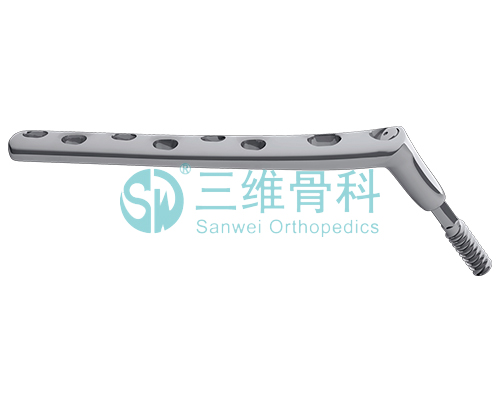Soil is the foundation of the tea plantation. Fertilizer is the food of the tea tree. The improvement and fertilization of the tea plantation is an important technical link for the transformation of the low-yielding tea plantation. It is also the foundation for the transformation and planting of the tea tree crown and the improvement of tea quality.
First, the whole park deep turn, slot change soil
Tea tree is a deep-rooted crop, and the normal growing tea tree roots can be stretched to 1-2 meters. Therefore, the tea garden soil must have a deep soil structure, and the effective soil layer should not be less than 80 cm in general, and the effective range of the tea tree within a high range of 70 cm. The thickness of the layer is directly proportional to the effective soil layer of high-yielding tea gardens generally is more than 100 cm, but currently there are many tea gardens in our area. Due to erosion leaching and other reasons, the effective soil layer is shallow, the bottom layer has an adhesive layer, and there is no deep plowing before planting. The result is low yield. For thin tea gardens, take full advantage of autumn and winter, deep teat rows along the edge of the crown vertical, depth of 60-70 cm, width 60 cm, the surface of the mature soil back into the ditch, to achieve a comprehensive change of soil the goal of.
Second, strengthen the tube, improve fertility
The growth of tea trees depends not only on the levels of various nutrient elements, but also on the balance between nutrient elements. According to relevant information, the average production of 50 kilograms of dry tea per day brought about 2.25 kilograms of nitrogen, 0.6 kilograms of phosphorus, 1.25 kilograms of potassium, and 1.16 kilograms of magnesium from the tea tree. And the tea tree roots, leaves, flowers and fruits also need to consume nutrients, so the amount actually absorbed from the soil far exceeds this value, again, too much nitrogen, will have antagonistic effects on potassium and magnesium, affecting the tea tree For the absorption of potassium and magnesium, the lack of trace elements will affect the effects of a large number of elements, etc. The content of soil nutrients in soil organic matter is comprehensive, and the buffer capacity is strong. It plays a decisive role in balancing the relationship between mineral content and nutrition, and the content of soil organic matter is extremely high. The more balanced the relationship between these nutrients, the generally high-yield tea plantation soil organic matter shall not be less than 1.5%, total nitrogen shall not be less than 0.1%, effective nitrogen, phosphorus and potassium are respectively above 100, 10, and 80 ppm. This is an important material basis for the high yield and quality of tea plants. Many tea plantations in the entire region have low soil organic matter and poor fertilizer retention performance. They have low buffering capacity for nutrient balance, coupled with one-sided fertilization, accelerating the deterioration of the balance between nutrient elements. As a result, the effect of fertilization is low, resulting in low yield and low quality. This phenomenon is very common at present. Therefore, strengthening management of tea garden fertilizers and improving soil fertility has reached a period of non-obstruction. In the winter, when the mold is changed and the soil is changed, the application of organic fertilizer should be highlighted. 250-300 kg of cake fertilizer must be applied per mu, and 8,000-10,000 kg (or 4000 kg of fertile fertilizer) must be applied to the bark, and phosphorus should be 30-50 kg. Potassium 15-25 kilograms, combined with other inorganic or microbial fertilizers.
Third, to strengthen the tea plant pest winter defense
In recent years, Yiling Tea Region has a wide range of diseases and pests, and has a wide range of hazards. In particular, there are a large number of disease occurrences and expansion and spread, spreading from high mountains to low mountains or from low to high altitudes. Strengthening the winter defense of tea trees plays an important role in depressing the base number of pests in the second year. The specific measures are: First, the pruning and finishing of the tea plantation, cutting off diseased plagues, sick leaves and branches, etc., and cutting the diseased branches and leaves out of the tea plantation and burning it; second, the tea gardens completely sterilizes and removes 0.5-0.7 degrees after the tea plantation is stopped. Lithium sulphur seals the garden, spray thoroughly and thoroughly to ensure the quality and effectiveness of disinfection.
The DHS system is designed to provide strong and stable internal fixation of a variety of intertrochanteric, subtrochanteric and basilar neck fractures. The plate including stainless steel and titanium model. The DHS plates have a low-profile design, reducing the risk of trochanteric bursits.
The low-profile design reduces the risk of iliotibial band irritation(distal femoral fractures) and trochanteric bursitis(subtrochanteric fractures)
The DCS plates are available with 6 to 16 holes , for varied clinical situations. the DHS/DCS lag screw is available in 50mm to 145mm lengths. The DHS/DCS compression screw can be used for additional compression; only one size compression screw is needed.

DHS/DCS Dynamic Hip And Condylar System
DHS/DCS Dynamic Hip And Condylar System, DHS/DCS Dynamic Hip,DHS/DCS Condylar System,DHS Plate
Shandong Hangwei Orthopedics Medcial Instrument Co., Ltd. , https://www.hangweimedical.com